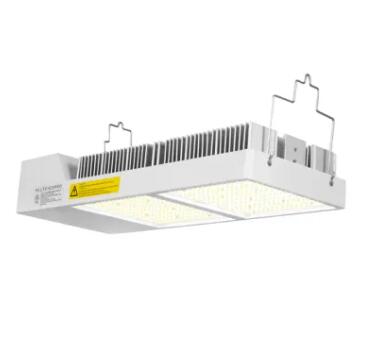Illuminating Success: A Guide to Choosing the Right LED Grow Light for Your Plants and Growing Conditions
2023-12-13
Introduction:
In the dynamic world of indoor gardening and plant cultivation, the right lighting can make all the difference in the success of your endeavors. LED (Light Emitting Diode) grow lights have become a popular choice for their energy efficiency, customizable spectra, and versatility. However, selecting the right LED grow light for your specific plants and growing conditions requires careful consideration. In this blog, we'll guide you through the key factors to keep in mind when choosing an LED grow light to ensure optimal plant growth.
1. Light Spectrum: Nurturing with Precision
- Understanding Spectral Requirements:
- Different plants have varying light spectrum preferences during different growth stages. Consider the specific spectral needs of your plants during the vegetative and flowering phases.
- Blue wavelengths (around 400-500 nm) are essential for vegetative growth, promoting strong stems and lush foliage. Red wavelengths (around 600-700 nm) are crucial for flowering and fruiting.
- Customizable Spectrum:
- Look for LED grow lights that offer a customizable spectrum. This flexibility allows you to adjust the light output according to the specific requirements of your plants at different growth stages.
- Full-spectrum LED lights are also available, providing a broad range of wavelengths to support plants throughout their entire life cycle.
2. Light Intensity: Balancing Act
- Consider Light Intensity Requirements:
- Different plants have varying light intensity preferences. High-light plants, such as tomatoes or peppers, thrive in bright conditions, while low-light plants, like herbs or lettuce, can manage with lower light levels.
- Evaluate the intensity requirements of your specific plants and choose an LED grow light with adjustable intensity settings.
- PAR (Photosynthetically Active Radiation):
- PAR measures the light spectrum that plants use for photosynthesis. Look for LED grow lights that provide a high PAR output to ensure that your plants receive the essential light energy for growth and development.
3. Light Duration (Photoperiod): Timing is Everything
- Understanding Photoperiod Requirements:
- Different plants have specific photoperiod requirements, indicating the duration of light and darkness they need daily. Some plants require longer days for flowering, while others may thrive with shorter light periods.
- Choose an LED grow light with programmable timers or dimming features to easily adjust the photoperiod according to your plants' needs.
4. Energy Efficiency: Illuminating Responsibly
- Consider Energy Consumption:
- LED grow lights are known for their energy efficiency compared to traditional lighting options. Evaluate the power consumption of the LED lights to ensure they align with your energy efficiency goals.
- Energy-efficient lights not only save on electricity costs but also contribute to a more sustainable and eco-friendly growing environment.
5. Heat Emission: Finding the Right Balance
- Evaluate Heat Output:
- LED grow lights generally produce less heat compared to traditional lighting sources like HID lights. However, it's still essential to consider the heat emitted by the lights, especially in confined growing spaces.
- Look for LED lights with built-in cooling mechanisms or heat dissipation features to maintain an optimal temperature for your plants.
6. Size and Coverage: Shining a Light on Space
- Consider Growing Space:
- The size of your growing area will influence the number and type of LED grow lights you need. Measure the square footage of your space and choose lights that provide adequate coverage.
- Opt for lights with adjustable coverage options to adapt to changes in your growing setup.
Choosing the right LED grow light for your plants and growing conditions is a nuanced process that requires a thoughtful understanding of your specific cultivation goals. By considering factors such as light spectrum, intensity, duration, energy efficiency, heat emission, size, durability, and budget, you can make informed decisions that contribute to the success of your indoor gardening endeavors. As you embark on your journey of cultivating thriving plants, let the right LED grow light be the beacon that illuminates your path to a bountiful harvest.



